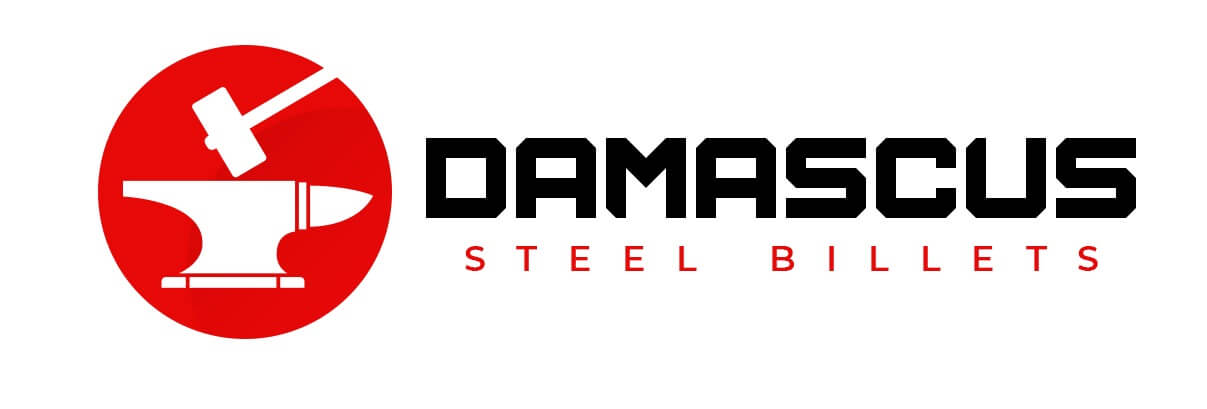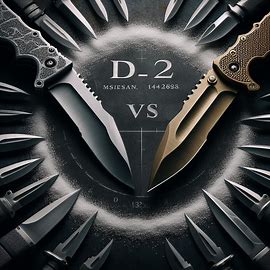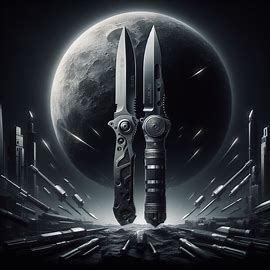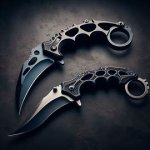When selecting the best blade for your knife, the steel used may make a huge impact. Knife aficionados frequently argue the advantages of different kinds of steel. This blog article will examine the differences between two common materials: D2 vs 1095 steel. From composition to performance, we’ll explain each’s distinguishing traits and help you make an informed choice.

D2 Steel: The Modern Marvel.
Composition
D2 steel is a high-carbon, high-chromium tool steel renowned for its remarkable wear resistance and hardness. The usual composition is 1.5% carbon, 12% chromium, 1% molybdenum, and vanadium. This alloying combination offers D2 its edge retention properties, making it a popular option among knife producers and consumers looking for long-lasting sharpness.
Performance Characteristics:
D2 is well-known for its exceptional edge retention, making it suitable for activities requiring continuous sharpness, including heavy-duty cutting and slicing.
Corrosion Resistance:
D2 has high corrosion resistance due to its chromium component, which is not fully stainless. Proper maintenance is required to avoid rust, especially in humid areas.
Toughness:
Although D2 is regarded as moderately robust due to its high hardness, not outperform other steels in impact resistance.
1095 Steel: The Time-tested Classic
Composition
1095 steel is part of the 10xx range of carbon steels, and its composition is straightforward: 0.95-1.05% carbon. This simplicity adds to its heat treatment ease, making it popular among blacksmiths and amateurs.
Edge Retention:
While lower than D2, 1095 has acceptable edge retention, especially given its ease of sharpening.
Corrosion Resistance:
1095 is prone to corrosion and requires routine maintenance. It lacks the chromium content of stainless steel, making it more prone to rusting.
Toughness:
1095 is known for its high toughness, which allows it to endure substantial impact and is less prone to chip or shatter with intensive use.
Key Differences Between D2 and 1095:
1. Edge retention:
D2’s exceptional hardness and wear resistance make it an excellent choice for edge retention. It retains a sharp edge for lengthy periods, making it ideal for applications that need sustained cutting.
While 1095 does not have the edge retention of D2, it still provides decent sharpness and is easy to sharpen when needed.
2. Corrosion resistance
D2 has higher corrosion resistance than many high-carbon steels, although it’s not entirely stainless. To avoid rust, it is advised that you clean and oil regularly.
1095 is more prone to corrosion and requires careful handling to prevent rusting. It’s critical to keep the blade dry and apply a protective coating.
3. Toughness
D2 is strong and necessary to strike a balance between hardness and toughness. 1095 is recognized for its great toughness. It can withstand extreme circumstances.
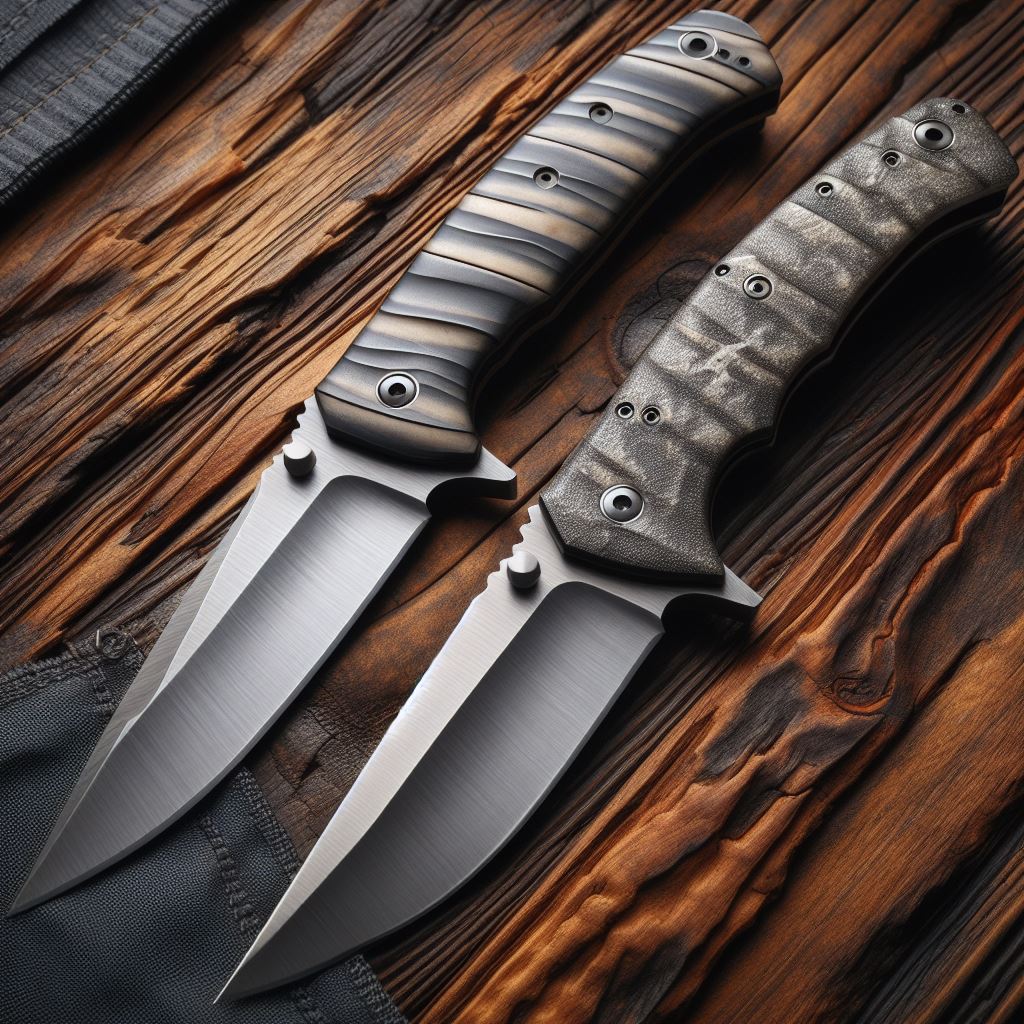
| Feature | D2 Steel | 1095 Steel |
| Composition | High carbon (1.5%), high chromium (12%), molybdenum, vanadium | Simple carbon steel (0.95-1.05% carbon) |
| Edge Retention | Excellent; high hardness and wear resistance | Respectable; easier to sharpen |
| Corrosion Resistance | Good, but not stainless; requires regular maintenance | Prone to corrosion; needs diligent care |
| Toughness | Relatively tough, but may not excel in impact resistance | Excellent toughness; withstands heavy use |
| Ease of Sharpening | Moderate; requires proper sharpening techniques | Easy; favored by DIY enthusiasts |
| Suitability for Outdoor Activities | Versatile; excels in prolonged cutting tasks | Durable and impact-resistant; suitable for tough conditions |
| Stainless Properties | Not fully stainless; needs care to prevent rust | Not stainless; susceptible to rust |
| Heat Treatment | Requires careful heat treatment for optimal performance | Simpler heat treatment; favored by blacksmiths |
| Availability | Widely available; used in premium knife production | Commonly used in various knife applications |
| Price | Generally higher due to the alloying elements | More affordable due to simpler composition |
| Blade Sharpness | Maintains sharpness for extended periods | Respectable sharpness; easier to restore |
| Application Focus | Often used in high-end, performance-oriented knives | Found in a wide range of knives, including budget options |
| Resilience to Chipping | May be prone to chipping under extreme stress | Less prone to chipping; more forgiving in tough conditions |
| Ease of Maintenance | Requires regular cleaning and oiling to prevent rust | Regular maintenance crucial for preventing rust |
| Impact Resistance | Decent but may not match the toughness of some other steels | Excellent; withstands heavy impacts well |
| Versatility | Versatile, suitable for various cutting tasks | Versatile, adaptable to different applications |
| Blade Hardness | High hardness contributes to wear resistance | Hardness balanced with toughness for durability |
| Suitability for Survival Knives | Depends on priorities; excels in edge retention | Excellent choice due to toughness and ease of sharpening |
| Blade Retention | Known for excellent edge retention properties | Good edge retention, considering its simplicity |
| Rust Prevention Measures | Needs regular oiling and cleaning to prevent rust | Requires diligent care to avoid rusting |
| Popularity Among Knife Enthusiasts | Popular choice for those prioritizing edge retention | Favored for its simplicity and ease of maintenance |
| Machinability | Slightly more challenging due to alloying elements | Easier to machine; preferred for DIY projects |
| Overall Durability | Durable but may require careful handling | Highly durable and forgiving in various conditions |
| Steel Refinement | Modern steel with improvements over its predecessors | Classic carbon steel with a time-tested reputation |
| Blade Flexibility | Moderately flexible, balancing hardness and toughness | Flexible, contributing to its durability |
| Influence on Knife Price | Often contributes to a higher price tag | Allows for more affordable knife options |
| Preferred by Knife Makers | Commonly used by makers of premium and custom knives | A favorite among custom knife makers and hobbyists |
| Sharpening Techniques | Requires knowledge of proper sharpening techniques | Easy to sharpen with basic sharpening skills |
| Consistency in Production | Quality may vary based on heat treatment and production processes | More consistent due to simpler heat treatment requirements |
| Resistance to Wear | High resistance to wear and abrasion | Resistant to wear, but not as high as some other steels |
| Blade Prone to Corrosion | Requires attention to prevent corrosion | Prone to corrosion, especially in humid environments |
| Precision in Knife Making | Precision required in heat treatment for optimal performance | Simplicity allows for easier precision in knife making |
| Popular Among Collectors | Valued for its high-performance attributes | Sought after for its classic appeal and historical significance |
| Weight of the Blade | Weight may vary depending on design and thickness | Generally lighter due to simpler composition |
| Preferred by Bushcrafters | Favored for its edge retention in outdoor tasks | Appreciated for its toughness in bushcraft applications |
| Resilience to Abrasion | High resistance to abrasion, maintaining sharpness | Resistant to abrasion, offering decent sharpness retention |
| Application in Folding Knives | Found in premium folding knives with performance focus | Less common due to the simplicity of carbon steel |
| Blade Patina Development | May develop a patina over time | Often develops a patina, adding character to the blade |
| Commonly Used in Swords | Occasionally used in high-quality sword production | Rarely used in sword making due to its carbon content |
| Luster and Appearance | May have a more polished, modern appearance | Characterized by a classic, raw steel look |
| Role in Tactical Knives | Suitable for tactical knives requiring sharpness and durability | Less common due to rust susceptibility |
| Usage in Kitchen Knives | Found in high-end kitchen knives for precision cutting | Not common due to the need for stainless properties in kitchens |
| Craze for Damascus Patterns | Damascus versions of D2 knives are sought after | Rarely used in Damascus patterns; more common in simpler designs |
| Elasticity of the Blade | Moderate elasticity; balances hardness with toughness | Offers good elasticity, contributing to durability |
| Historical Significance | Relatively modern steel with contemporary applications | Holds historical significance; used in classic knives and tools |
| Balance Between Components | Requires a delicate balance between hardness and toughness | Simplicity allows for a more straightforward balance |
| Preference in Machetes | Less common due to its hardness; may be prone to chipping | Appreciated for toughness in machetes, especially for heavy vegetation |
Frequently Asked Questions (FAQ):
Q1: Which steel is best for outdoor use?
A1: Both D2 and 1095 offer advantages for outdoor use. D2’s high edge retention makes it ideal for activities needing long-term sharpness, whilst 1095’s toughness shines in situations requiring durability and impact resistance.
Q2: Is the D2 stainless steel?
A2: D2 has considerable corrosion resistance, although it is not categorized as stainless steel. Regular maintenance is essential to preventing rust, particularly in humid conditions.
Q3: Can I sharpen 1095 easily at home?
A3: 1095 is quite easy to sharpen at home. Its easy construction and heat-treatment procedure make it popular among DIY knife lovers.
Q4: Which steel is best for survival knives?
A4: The decision between a D2 and a 1095 survival knife is based on your priorities. If edge retention is critical, D2 may be preferable. For individuals who value hardness and ease of sharpening, 1095 may be the best choice.
Conclusion
There is no simple solution to the D2 vs. 1095 argument. Both steels have advantages and disadvantages, making them suitable for various applications. Whether you choose the futuristic marvel of D2 or the time-tested classic of 1095, learning the differences between each steel will allow you to make an informed decision about your next knife.
